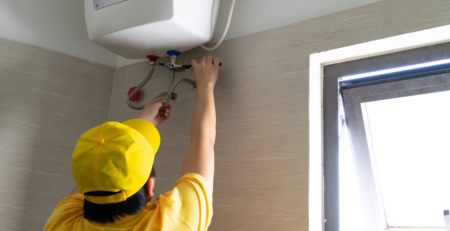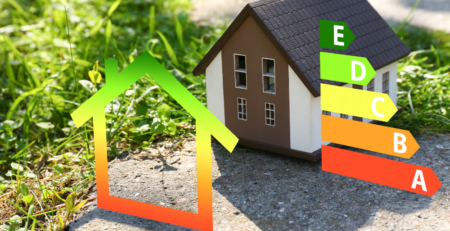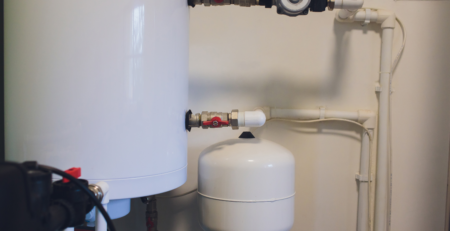DIY Upgrades: Enhancing Your Electric Water Heater’s Performance
Enhancing Your Electric Water Heater’s Performance Maximizing the performance of your electric water heater is not only beneficial for your comfort but also for energy efficiency. While professional maintenance is essential, there are several do-it-yourself (DIY) upgrades you can undertake to enhance your water heater’s functionality. In this guide, we explore DIY upgrades that can boost your electric water heater’s performance, efficiency, and overall longevity.
**1. Insulate Your Water Heater Tank
One of the most effective DIY upgrades for improving energy efficiency is insulating your water heater tank. A water heater tank insulation blanket is readily available at hardware stores and is easy to install. This additional layer of insulation minimizes heat loss, allowing your electric water heater to maintain water temperature more efficiently. Ensure to follow manufacturer guidelines and safety instructions during the installation process.
2. Flush the Tank Regularly
Sediment buildup in the tank can hinder your water heater’s performance over time. DIY flushing is a simple yet impactful maintenance task. Connect a hose to the drain valve at the bottom of the tank, turn off the power supply, and drain a few gallons of water to remove sediment. Regular flushing prevents sediment accumulation, enhances heating efficiency, and extends the lifespan of your electric water heater.
3. Install a Drain Pan with a Water Alarm
Protect your home from potential water damage by installing a drain pan under your electric water heater. Upgrade the pan with a water alarm that alerts you to leaks or excessive condensation. This DIY addition provides early detection of issues, allowing you to address them promptly. Choose a pan and alarm system that suits the size and layout of your water heater.
4. Insulate Hot Water Pipes
In addition to insulating the tank, insulating the hot water pipes connected to your water heater is a valuable DIY upgrade. Pipe insulation minimizes heat loss as hot water travels to your faucets, ensuring that the water retains its temperature for longer periods. This upgrade is particularly beneficial in colder climates and reduces the wait time for hot water to reach your taps.
5. Adjust the Thermostat Temperature
Fine-tuning your water heater’s thermostat settings is a simple yet effective DIY upgrade. Lower the thermostat temperature to the recommended 120°F (49°C) to save energy without compromising your comfort. This adjustment prevents overheating and reduces standby heat loss, contributing to energy efficiency and potentially lowering your utility bills.
6. Upgrade Showerheads and Faucets
Efficient water usage contributes to the overall performance of your electric water heater. Upgrade to low-flow showerheads and faucets to reduce hot water consumption without sacrificing water pressure. This DIY improvement not only conserves water but also allows your water heater to supply hot water more effectively, especially during peak usage times.
7. Install Heat Traps
Heat traps are devices that prevent the escape of hot water from the tank through the inlet and outlet pipes. Installing heat traps is a straightforward DIY upgrade that enhances your water heater’s efficiency by minimizing heat loss. Many modern water heaters come with built-in heat traps, but if your unit lacks them, adding heat traps is a cost-effective enhancement.
8. Check and Replace Anode Rod
The anode rod in your water heater plays a crucial role in preventing corrosion inside the tank. Over time, the rod may degrade, and checking it annually is a DIY task that can extend the life of your water heater. If the anode rod is significantly corroded, consider replacing it with a new one to ensure optimal corrosion protection and prevent potential damage to the tank.
9. Upgrade to a Timed Thermostat
Enhance energy efficiency by installing a timed thermostat or a programmable thermostat for your electric water heater. This DIY upgrade allows you to schedule the heating cycles based on your household’s hot water usage patterns. Programming the thermostat to operate during off-peak hours or when hot water demand is high ensures efficient performance and potential energy savings.
10. Consider a Pressure Regulator
High water pressure can strain your water heater and plumbing system. Installing a pressure regulator is a DIY upgrade that protects your water heater from excess pressure, reducing the risk of leaks and extending the appliance’s lifespan. Ensure to follow installation instructions carefully and choose a regulator that suits your water pressure needs.
Conclusion
DIY upgrades play a significant role in maintaining and enhancing the performance of your electric water heater. From insulation and flushing to thermostat adjustments and pressure regulation, these simple enhancements contribute to energy efficiency, cost savings, and a prolonged lifespan for your water heater. Regular DIY maintenance ensures that your water heater operates at its best, providing consistent hot water for your household needs.
Get Access Now
Ready to explore more DIY upgrades and maintenance tips for your electric water heater? Visit for comprehensive insights, comparisons, and expert recommendations to guide you in optimizing the performance of your water heater through practical and cost-effective DIY upgrades.




Leave a Reply